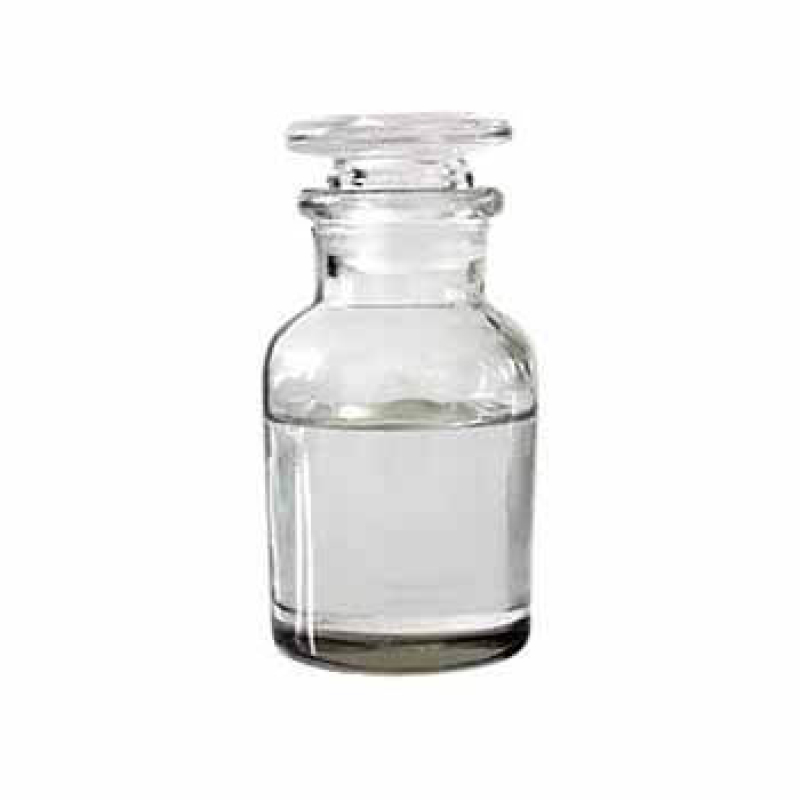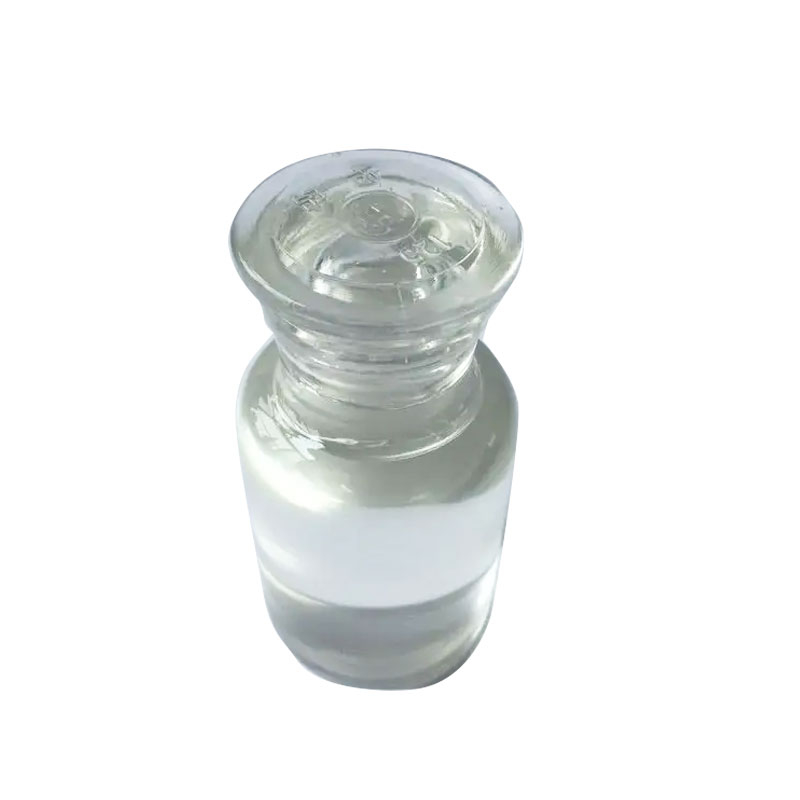Products Description of 1,7-DihydroxynaphthaleneCAS#575-38-2 1,7-Dihydroxynaphthalene Chemical PropertiesMelting point 180-184 °C (lit.)Boiling point 246.06°C (rough estimate)density 1.0924 (rough estimate)refractive index 1.5418 (estimate)Fp 252 °Cstorage temp. Sealed in dry,Room Temperaturesolubility DMSO (Slightly), Methanol (Slightly)pka9.58±0.40(Predicted)form Solidcolor Beige to Dark BrownWater Solubility Slightly soluble in water.λmax335nm(Cyclohexane)(lit.)BRN 1908499CAS DataBase Reference575-38-2(CAS DataBase Reference)N
ติดต่อตอนนี้
Products Description of Polyvinylpyrrolidone CAS#9003-39-8Polyvinylpyrrolidone, abbreviated as PVP, is a polymer of vinylpyrrolidone. Due to its different degree of polymerization, it is divided into soluble PVP and insoluble PVPP (polyvinylpolypyrrolidone). The relative molecular mass of soluble PVP is 8000-10000. It can be used as a precipitant and precipitate with polyphenols. With this method, it is easy for residual PVP to remain in the wine.
ติดต่อตอนนี้
Products Description of Microcrystalline cellulose CAS#9004-34-6Microcrystalline cellulose (MCC) is the product of natural cellulose hydrolyzed to the ultimate degree of polymerization by acid. It is white or nearly white in color, odorless and tasteless, and its particle size is generally about 2 to 80 μm. It has the advantages of low density, high modulus, renewable, biodegradable, and wide sources.
ติดต่อตอนนี้
Products Description of 2,4,5-Trichloropyrimidine CAS#5750-76-52,4,5-Trichloropyrimidine is a new type of reactive dye intermediate raw material and a synthetic raw material for new antibacterial and anti-inflammatory chemical drugs. With the continuous increase in sales of new reactive dyes and new antibacterial and anti-inflammatory drugs, the demand for the raw material 2,4,5-Trichloropyrimidine required for its synthesis is also growing. Therefore, it is particularly urgent to study its synthesis and develop a green new process suitable for industrial mass production.
ติดต่อตอนนี้
Products Description of 2,4,6-Tri-tert-butylphenol CAS#732-26-3Organic synthesis. Aviation gas oil antioxidant. Anti-aging agent for natural rubber and synthetic rubber. Low-efficiency stabilizer for synthetic rubber.
ติดต่อตอนนี้
Products Description of Molybdenum trioxide CAS#1313-27-5Molybdenum trioxide is an inorganic compound with the chemical formula MoO3. It is mainly used to determine protein, phenol, arsenic, lead, bismuth, etc. It can also be used as a reducing agent for phosphorus pentoxide, arsenic trioxide, hydrogen peroxide, phenol and alcohols. It can also be used to prepare molybdenum salts and molybdenum alloys.On October 27, 2017, the World Health Organization's International Agency for Research on Cancer published a preliminary list of carcinogens for reference.
ติดต่อตอนนี้
Products Description of Orthoboric acidCAS#10043-35-3Boric acid is a crystalline compound formed by boron trioxide dissolving in water. It is an inorganic acid, mainly tetraboric acid H2B4O7 (also known as pyroboric acid), metaboric acid (HBO2)n and orthoboric acid H3BO3 (also known as orthoboric acid). Among them, orthoboric acid has the highest water content and is the most stable. Orthoboric acid, also known as boric acid for short, has the appearance of white powdery crystals or flaky crystals with three oblique axes and is shiny. It has a slight bitter taste.
ติดต่อตอนนี้
Products Description of Manganese sulfate CAS#7785-87-7Manganese sulfate (English: Manganese sulfate) is a light pink monoclinic fine crystal at room temperature. It is easily soluble in water and insoluble in ethanol. It starts to lose crystal water when heated above 200℃, loses most of the crystal water at about 280℃, becomes anhydrous salt melt at 700℃, and begins to decompose at 850℃, releasing sulfur trioxide, sulfur dioxide or oxygen.Manganese is an element of Group VII of the periodic table. Manganese in a free state is not found in nature.
ติดต่อตอนนี้
Products Description of Isobornyl acrylate CAS#5888-33-5Isobornyl acrylate, abbreviated as IBOA, has attracted people's attention in research and application in recent years as a functional acrylate monomer due to its special structure and performance.
ติดต่อตอนนี้
Dichloromethane CAS# 75-09-2Dichloromethane is a colorless liquid with an ethereal, but penetrating odor. Its miscibility in alcohol and ether and slight solubility in water has made it an ideal solvent and otherwise extremely versatile chemical. It has been used industrially (solvent and paint remover), as a drug (inhalation anesthetic) and as an agricultural chemical (growth regulator and fertilizer). It is narcotic in high concentrations and carcinogenic.
ติดต่อตอนนี้
Products Description of Decanoyl octanoyl-glycerides CAS#65381-09-1Glyceryl caprylate, also known as GTCC, is a mixed triester of glycerol and medium-carbon fatty acids in vegetable oils. It is a colorless, odorless, low-viscosity lipophilic emollient with extremely high antioxidant properties. In cosmetics, GTCC can replace a variety of oils and fats as an emollient and fat-enriching agent, and can also be added as a carrier and diluent to active preparations or conditioners such as sterols.
ติดต่อตอนนี้
Products Description of DL-Limonene CAS#138-86-3Dipentene is a colorless, flammable liquid at room temperature with a pleasant lemon scent.
ติดต่อตอนนี้
Diethanolamine CAS#111-42-2Diethanolamine is an natural compound. Structurally, it is composed of two ethanol companies () and one amino team (), and belongs to the type of alcoholamine compounds. This shape offers it special chemical properties, which is the groundwork for its position in many fields. It has right solubility and is without difficulty soluble in polar solvents such as water, ethanol and acetone, and can be miscible with water in any proportion. This property makes it very handy to use in many utility situations that require aqueous solutions.
ติดต่อตอนนี้
Dimethoxymethane CAS#109-87-5Chemical Properties:Dimethoxymethane, also called methylal, is a colorless flammable liquid with a low boiling point, low viscosity and excellent dissolving power. It is stable in the presence of alkalis and mild acids, and to high temperatures and pressures. It differs from other ethers in that it forms only minute omounts of peroxides. It will dissolve such synthetic resins as nitrocellulose, cellulose acetate and propionate, ethyl cellulose, vinyl, "Epons" and polystyrene, and also many of the natural gums and waxes.
ติดต่อตอนนี้
Ethyl acetate CAS# 141-78-6Chemical Properties:Ethyl acetate (structure shown above) is the most familiar ester to many chemistry students and possibly the ester with the widest range of uses. Esters are structurally derived from carboxylic acids by replacing the acidic hydrogen by an alkyl or aryl group. Ethyl acetate itself is a colourless liquid at room temperature with a pleasant "fruity" smell, b.p.
ติดต่อตอนนี้
Products Description of 3,5-Bis-tert-butylsalicylic acid CAS#19715-19-6This product is white powder.
ติดต่อตอนนี้
Musk Ketone CAS# 81-14-1Ketone musk is an important synthetic fragrance with the formula C14 H18 N2 O5 and molecular weight 294.303. It is a pale yellow crystal, usually powdery or flaky, with a sweet, musk-like animal aroma, soft and long-lasting.
ติดต่อตอนนี้
Products Description of Glycolic acid CAS#79-14-1Glycolic acid, also known as glycolic acid and glycolic acid, is also an important organic synthesis intermediate and chemical product. It is widely used in organic synthesis, cleaning, electroplating, textile, leather, sterilization and other industries.
ติดต่อตอนนี้
1H-Benzotriazole CAS #95-14-71H-Benzotriazole is prepared by the reaction of o-phenylenediamine with nitrous acid in dilute sulfuric acid. Damschrodner and Peterson were able to synthesize the 1H-benzotriazole in a high yield (80%) by nitrosation of o-phenylenediamine with sodium nitrite in glacial acetic acid and water.1H-Benzotriazole is an anticorrosive agent, which is useful in aircraft deicing and antifreeze fluids. It is also employed in dishwasher detergents.
ติดต่อตอนนี้
Products Description of 6-Fluoronicotinic acid CAS#403-45-26-Fluoronicotinic acid is a pyridine compound, which is often used as a pyridine intermediate and a pharmaceutical intermediate.
ติดต่อตอนนี้
Products Description of 2-Amino-6-chlorobenzoic acid CAS#2148-56-32-Amino-6-chlorobenzoic acid is a reactive compound that can be used as an antimicrobial agent. It binds to the active site of enzymes and inhibits their function, thereby preventing bacterial growth. It has acidic properties, which may be due to its ability to act as a dehydrating agent to hydrolyze esters.
ติดต่อตอนนี้
Products Description of Formic acid CAS#64-18-6 Formic acid is an important chemical raw material. It was first discovered by Fisher in 1670. A.S.Marggret first produced pure formic acid in 1749.It was first discovered by distilling red ants, hence the name formic acid. Formic acid is widely found in nature, such as in the secretions of red ants, bees, caterpillars, etc., in the leaves and roots of plants, and in fruits. It is the simplest carboxylic acid. Compared with other fatty carboxylic acids, it has a special structure and is more acidic.
ติดต่อตอนนี้
Products Description of [1,2,4]TRIAZOLO[1,5-A]PYRIMIDINE-2-CARBOXYLIC ACID CAS#202065-25-6[1,2,4]Triazolo[1,5-a]pyrimidine-2-carboxylic acid is a chemical.Molecular Formula is C6H4N4O2.[1,2,4]TRIAZOLO[1,5-A]PYRIMIDINE-2-CARBOXYLIC ACID Chemical Propertiesdensity 1.79±0.1 g/cm3(Predicted)form powderpka-4.67±0.41(Predicted)color CreamSafety InformationHazard Codes XiRisk Statements 43Safety Statements 36/37HazardClass IRRITANTHS Code 2933998090Product Application of [1,2,4]TRIAZOLO[1,5-A]PYRIMIDINE-2-CARBOXYLIC ACID CAS#202065-25-6[1,2,4]Triazolo
ติดต่อตอนนี้
Trihydroxymethylpropyl Trioleate CAS 11138-60-6Insoluble in water, soluble in a variety of organic solvents, such as ethanol, ether, acetone, etc. It has good chemical stability, but may decompose or react under high temperature, strong acid, strong alkali and other conditions.It has excellent lubrication properties and can effectively reduce friction and wear of mechanical equipment.
ติดต่อตอนนี้
























![[1,2,4]TRIAZOLO[1,5-A]PYRIMIDINE-2-CARBOXYLIC ACID CAS#202065-25-6](https://sdluxicdn.huazhi.cloud/cdn/ff/oLGUsn18qGlr6xFpfvjw88ruuxs7GrtvunO9beYlPGM/1717583118/public/styles/chanpinzhutu/public/2024-06/photobank%20%282%29_1.jpg?itok=-1jJhH8M)









